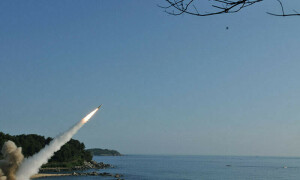THIS is Lyari — a neighbourhood that everyone in Karachi talks and knows about. A pertinent question: how many Karachiites, other than those who live here, have ever set foot in the area? Answer: a handful.
Lyari is like an award-winning, controversial, well-publicised book that only voracious readers have gone through but everyone has an opinion about. The perception is: it is dangerous territory. If you are not familiar with its dark alleys, if you do not have friends in Lyari, you can fall prey to the sporadic violence which has become all but synonymous with it.
This is not true, because, another question: cannot this be said about the whole of Pakistan? In fact, Lyari has a clear distinction. It is a neighbourhood with soul. And that’s rare.Some historians believe Lyari predates British rule in the region. Architect and conservationist Yasmeen Lari in her book Karachi during the Raj writes: “By 1890 the population of Lyari had already reached 24,600.” The people who inhabit this zone are an honest-to-the-core lot. Yes, they have their share of miscreants like any other community. Yes, development is something that has not reached them the way they deserve it. Yes, they scream when someone steps on their foot. Who wouldn’t? They love their football and boxing, and like to engage in a hearty social chitchat after dusk. Rest assured: they do not beat about the bush, which makes them all the more endearing.
Visiting Lyari can be an utterly rewarding experience for a number of reasons; one of them is that the colonial buildings that remain amidst a slapdash growth of concrete flats and houses are no less significant. (They do not outnumber modern constructions.) A smattering of such structures amidst the markedly contemporary residential and commercial facilities, to date, embodies the quality of making their viewer appreciate architecture and history in equal measure. Let’s take a look at that part of Lyari where the famous Kakri Ground is located. Simply put: a small stretch of Nawab Mahabat Khanji Road. If you have entered the area taking a detour from Merewether Tower, as soon as you hit this road and cross the big entrance on which ‘Welcome to Lyari’ is written in large fonts, there is no chance in the world you will not see a beautiful stone-made building with a boundary wall. The boundary wall blocks the view of the structure’s ground floor, so the urge to peruse the building up-close is natural. If you belong to the male species, you cannot easily step into it. Why? It’s the Ronaq-i-Islam Degree Girls College.
Even a cursory look at the institution reveals what a delightful work of architecture it is, despite the fact that its arched openings have been stuffed up with jalis perhaps made of cement. The ground storey too has been painted differently. Still, it gives you a fair idea what a crackerjack of a sight it must have been when it was built. Locals believe in pre-partition times it used to be a dharamshala. Not surprising at all!
Move ahead and in two shakes of a lamb’s tail you will reach Lyari’s most talked about spot: Kakri Ground. It is an intriguing spot. Young Lyari boys can be seen playing football with consuming passion on the sandy ground. The Mahabat Khanji Road side has the entrance to the facility with a wall running along it. On its opposite end there are concrete slab seats for spectators; a contemporary building fills the gap between the two ends, and the side facing that building has the remaining portion of the wall which runs along the main road to complete the whole squarish area of the ground.
The senior spectators who come to Kakri Ground are no regular Joes. They brim with conventional wisdom. According to one of them, ‘kakri’ is a distorted version of the word kankari (pebbly). He thinks in the beginning the ground had nothing but kankarian, which can be found underneath the sandy surface. The original name of the ground was Mohammad Ali Park.
The intersection of the roads next to Kakri Ground brings into view a splendid example of pre-independence work of stonemasonry. Right at the corner a fine, fine building called Dada Mansion stands tall. Indeed, it’s not a patch on what it was, let’s say, 63 years back, but even in the second decade of the 21st century the designs, the carvings and the shape of its doors, windows and balconies can measure up to any of Karachi’s old classical structures.
Though three or four buildings on the other side of Mahabat Khanji Road, opposite the Ronaq-i-Islam College, are not as old as the structures mentioned above, they were certainly made prior to Pakistan’s inception on the global map. And their present condition makes them look much older than they actually are.
Architect Arif Hasan says, “There are four kinds of old buildings in Lyari. (1) Buildings made of matti which existed till 1996 (2) Structures made of hammer-dressed stone (3) Buildings made during the affluent Karachi period of mid-19th century with chiseled stone, classical elements etc (4) and the ones built in the 20th century having modernist elements.”
After you are done with your visit to Lyari, Charles Baudelaire might show up and whisper this in your ear, “The life of our city is rich in poetic and marvelous subjects. We are enveloped and steeped as though in an atmosphere of the marvelous — but we do not notice it.”
mohammad.salman@dawn.com










































Dear visitor, the comments section is undergoing an overhaul and will return soon.